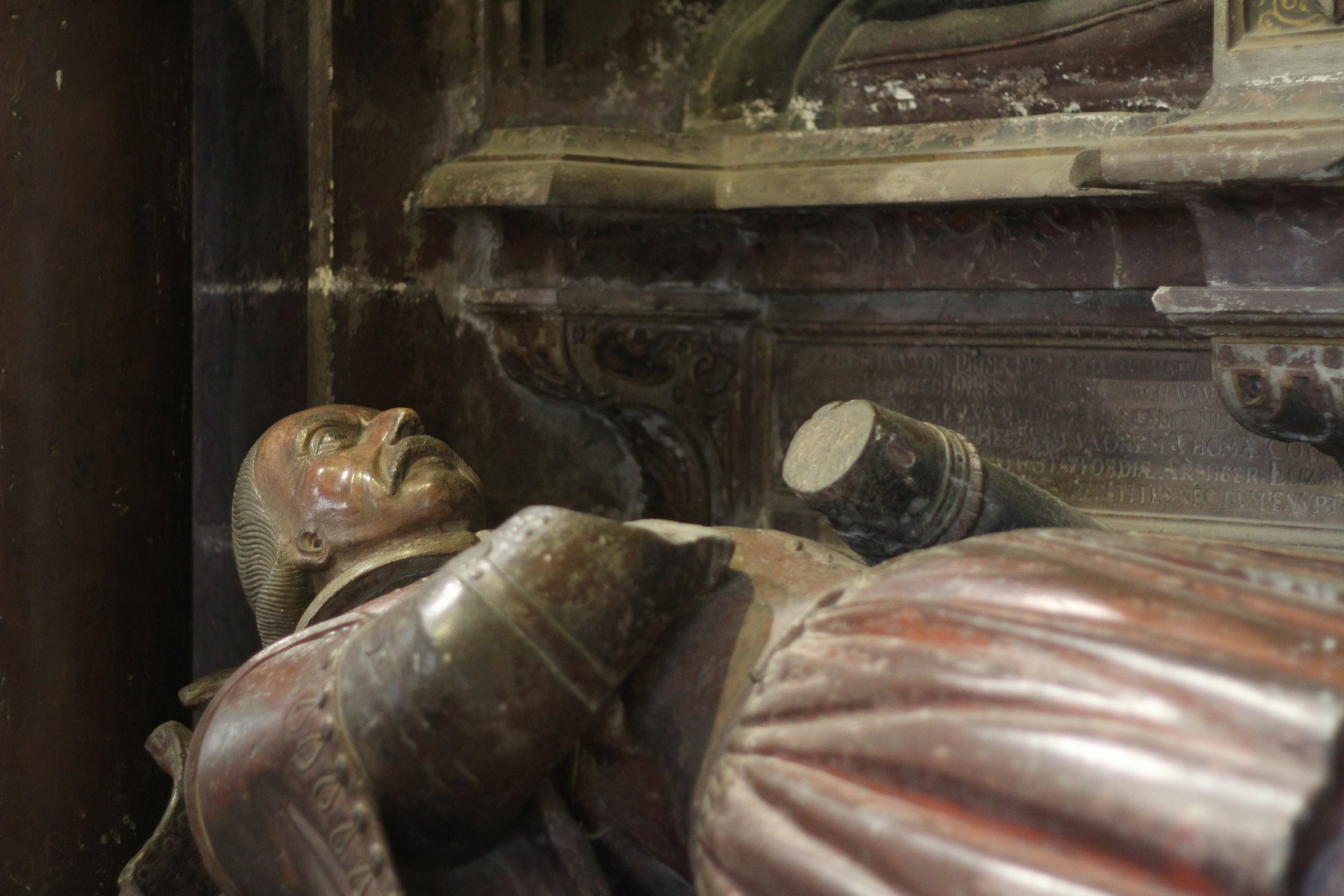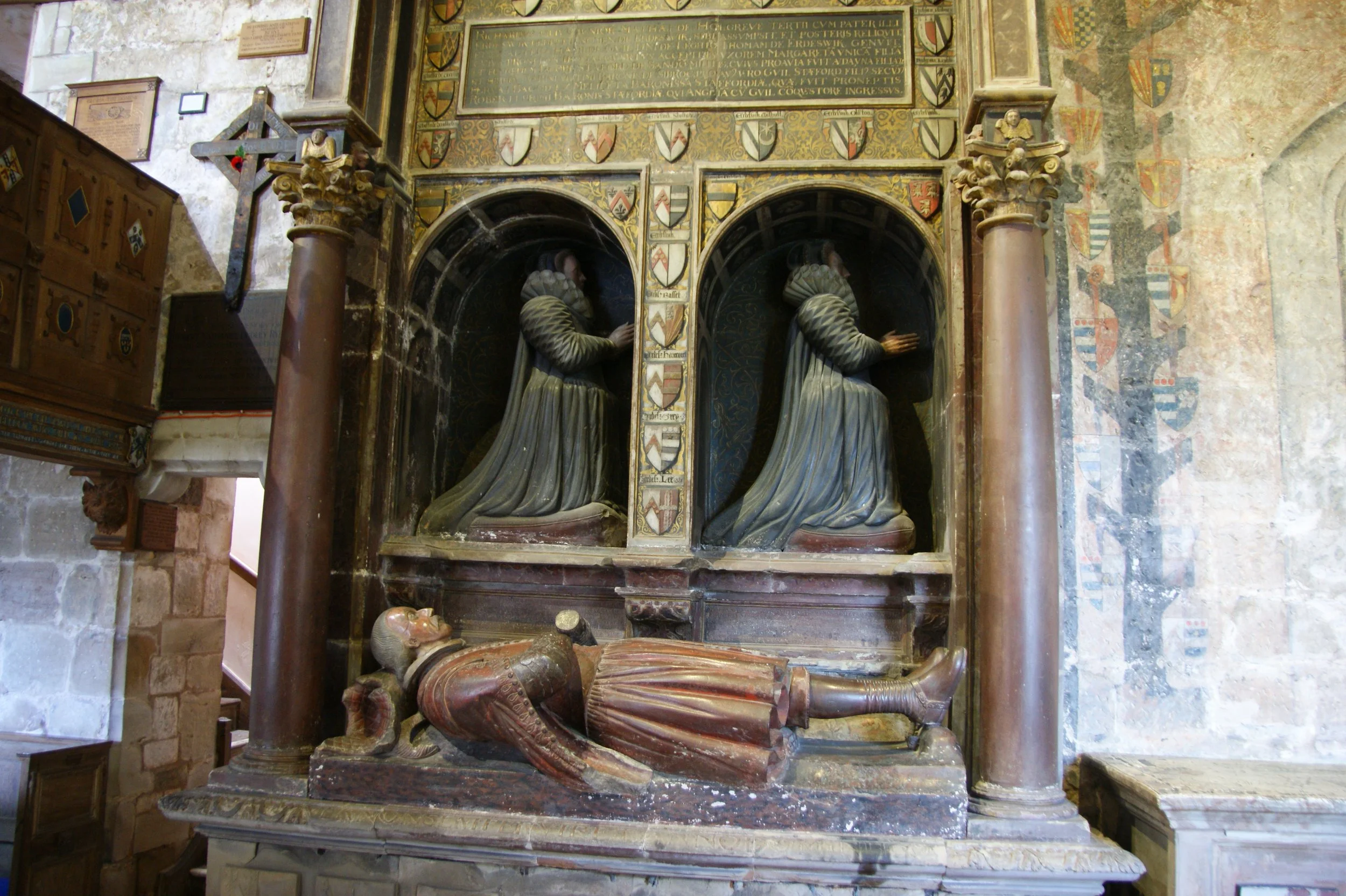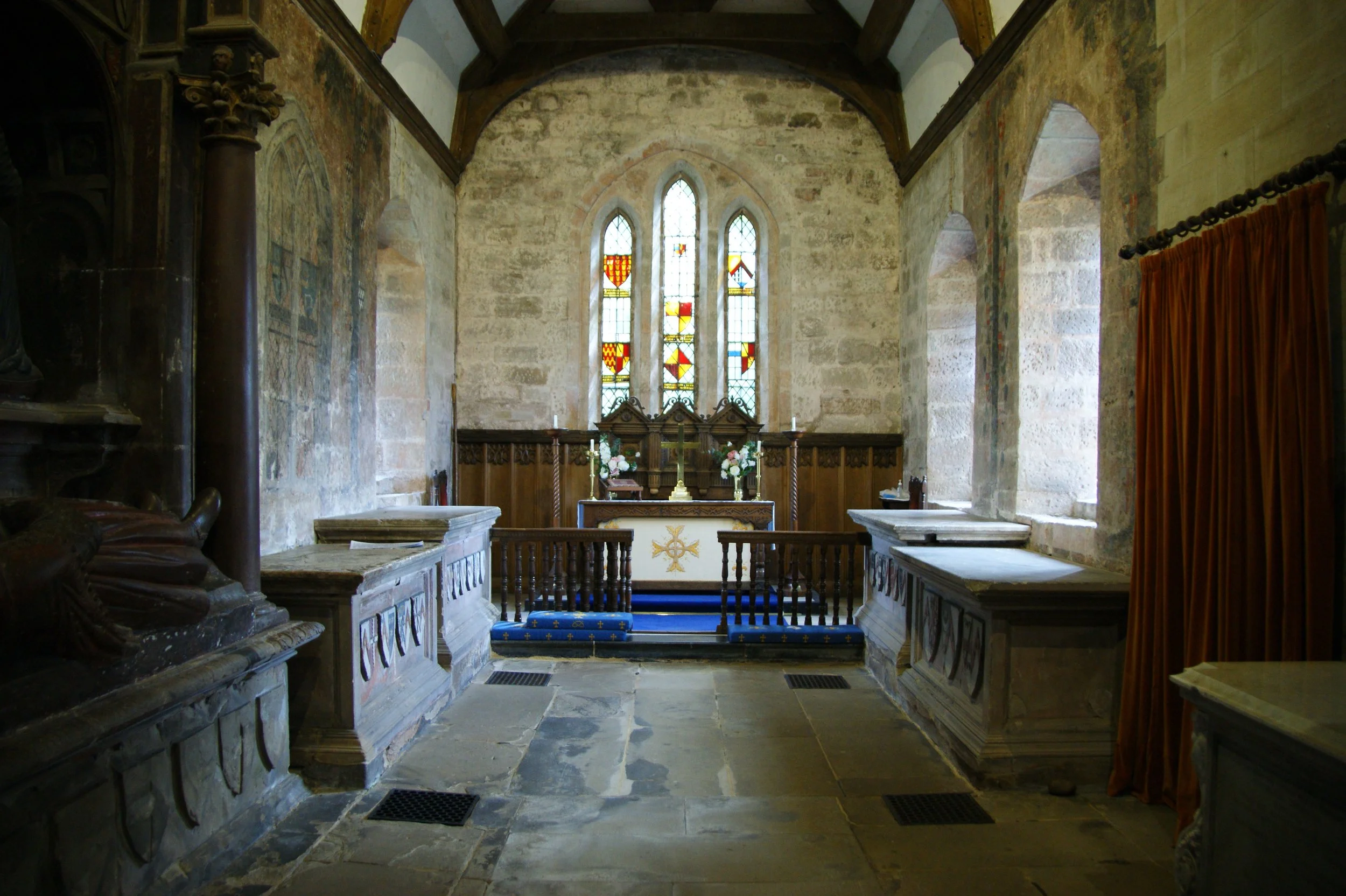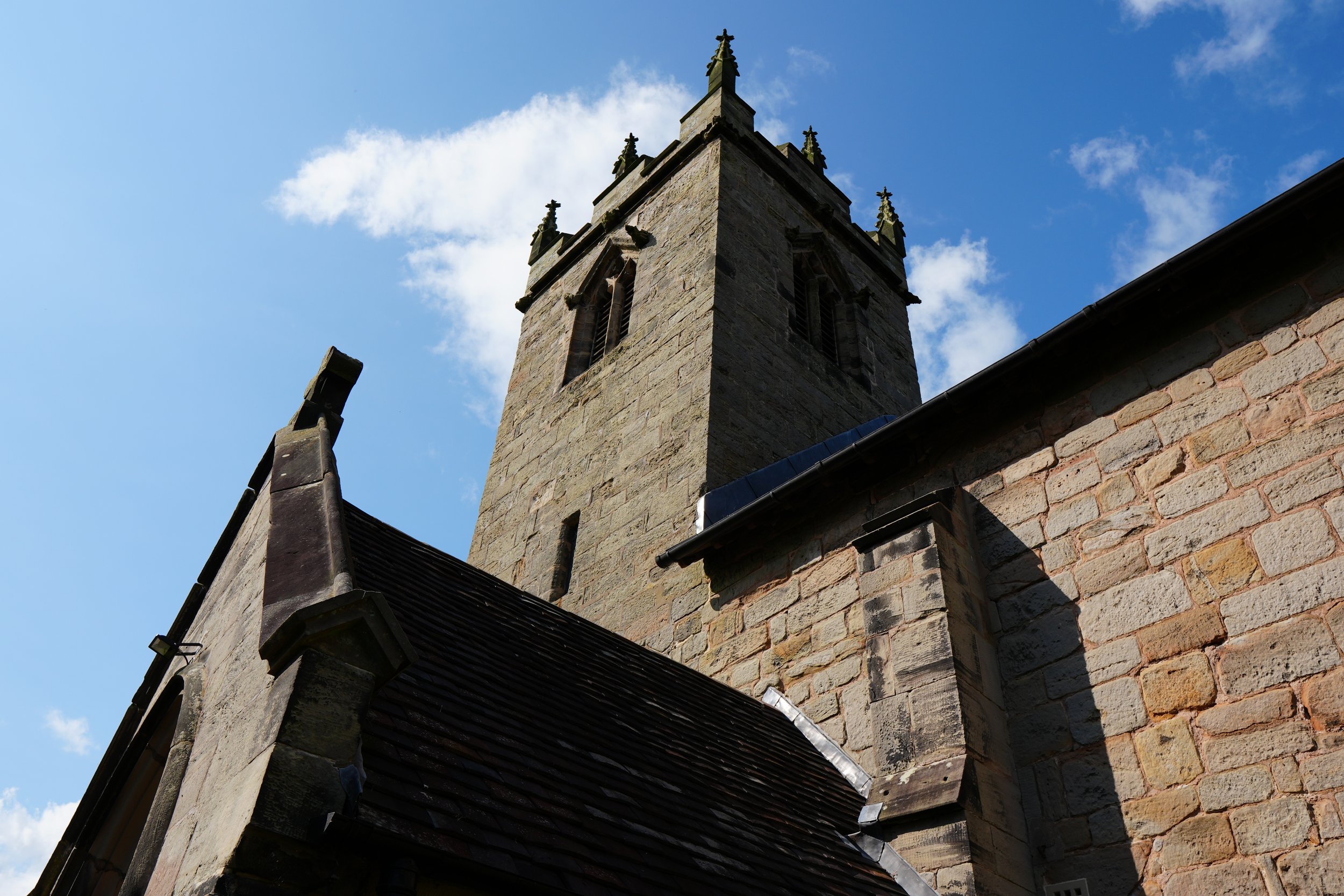
A Brief History of Sandon All Saints
Ancient buildings have many stories to tell. Built as a place of worship, All Saints, Sandon, has been the focus of community life and worship, in our small hamlet and its parish, over the last 1,000 years.
Originally located in the heart of the medieval settlement of Sandon in Staffordshire, this building now stands alone, save for the Victorian former vicarage. The settkement declined over time and eventually disappeared, leading to dwellings being located now on the main road between Stone and Weston. However, the life of the church remained vibrant, now drawing our congregation from a wide area to enjoy our remarkable heritage and our warm, friendly welcome to services
An interesting publication, showing the changes in Sandon village, has been compiled by Robert Selby, entitled A History of Sandon, available from the Parochial Church Council, which gives the context for the church.
In this section, you will be able to enjoy a brief tour of the main features of the church and learn a little more about our history. More information can be found in the detailed History by Era section and the Archives Section. Join us on a voyage through the pages of our history, as we share the fascinating tale of All Saints Church, Sandon.
A Christian church has stood on this site for a thousand years.
Our Grade I listed building holds a fingerprint from every stage of English history over the last one thousand years – and even longer.
Although it is thought that there was an Anglo-Saxon church serving the settlement on the adjacent field, our history really began when William the Conqueror (1066) took the lands from the Saxon Earl of Mercia and gave them to his nephew, who he had made the the Earl of Chester. With the creation of a new Baron of Malbanc and the subsequent founding of the Abbey of Combermere c.1130, All Saints entered the history books.
By the 14th century the Norman church was considered to be too small. It was replanned and extended.
Remnants of the original structure can still be seen in the original doorway arch of the southwest corner.
Other distinct features evidence that the building began when the English Church was a part of the Roman Church, such as the piscina in an ornate alcove of the South Aisle. A piscina was used as a drain to dispose of unused consecrated wine and the water used to wash communion vessels, by returning it to the ground inside the wall, not outside of the building.
Over the following centuries the lords of Sandon Manor and patrons from noble families extended the church to its present size, adding many significant features.
The Sandon estate passed through marriage from Malbanc via Baron Vernon of Shipbrook, Cheshire to Sir Thomas Stafford and then in 1339, when Margaret Stafford married Thomas Erdeswicke, to the Erdeswicke line. Whie Combermere Abbey retained the right to recommend a priest to any vacancy, the Erdeswicke family continued to exercise patronal rights until the 17th century.
Significant changes took place during these early years. The nave and chancel were added in stages in the 14th century. The short north aisle was added by the Stafford family, probably as a chantry chapel, where prayers would have been said for the departed, releasing their souls from purgatory by prayer. The tower was added c.1450.
Not all changes were structural. In 1538 The Abbey of Combermere was dissolved by Henry VIII, and so began the changeover from practicing a Roman Catholic religion to a Protestant religion.
Notable among the patrons was Sampson Erdeswicke, a well-regarded antiquarian, and historian of Staffordshire who lived in the reign of Elizabeth I and a contemporary of Sir William Dugdale, medieval historian and Herald.
Sampson delved into researching his family history resulting in an integrated display of post-reformation genealogical paintings on the walls, heraldic glass above the altar and family monuments and tombs spanning five generations. Perhaps unsurprisingly, one of the dominating aspects is Sampson’s own monument and tomb in the chancel, which he constructed before he died in 1603.
While other post‐reformation schemes with a similar theme are known, conservationists state that the work at Sandon is particularly remarkable for its conceptual and technical virtuosity, as well as the rarity of its intact survival in this country.
However, one piece is no longer intact, the damage itself adding to the historical drama. Sampson’s effigy is now missing his forearms, which, the story says, was done by Roundheads on their way to the Battle of Hopton Heath in 1643.
George Digby had enough of the chancel being so enriched by his stepfather.
In 1655 George Digby made several alterations to the interior of the church, moving the altar to the north aisle. Although it’s alleged this was to divert focus away from Sampson’s domineering effigy, we should remember that this was at the time of the change away from Roman Catholicism, with less emphasis on decoration. The altar did not revert back to its present position, at the east end of the Chancel, until 1839.
Following the arrival of Nathanial Ryder, Baron Harrowby, in 1776, efforts to build a gallery pew and fireplace in 1782, brought down part of the south wall of the Chancel and damaged a Stafford tomb and destroyed parts of the mural in that area. As part of the repairs, the walls were plastered, covering the paintings.
In 1845 the west end of the church was extended and a stained glas window installed and a similar window installed in the east end of the south aisle.
The Modern Age.
In 1929 the staircase to the balcony was relocated to enable George Digby’s tomb to be moved from the centre of the chancel to the south side and the balcony rebuilt with a replacement stircase built within the thick walls. Detailed refurbishment work included removing the plaster to once again reveal Sampson Erdeswicke’s paintings and creating the Chancel we know today.
The south aisle was reordered in 1958 to cater for the smaller congregations, sponsored principally by the Cadman family.
Finally, in the last quarter century, All Saints has been modernised with a hearing aid loop, modern heating, electrics and lighting, new pathways and an accessible toilet. And, as work was carried out, we rediscovered the crypt under the west end pews, where coffins have been dated to the late 18th or early 19th century.
Make a donation
All Saints has been preserved through the hard work of our congregation and vital support of our patrons over centuries. Help us keep this rich piece of history alive for the next century with a small donation.






